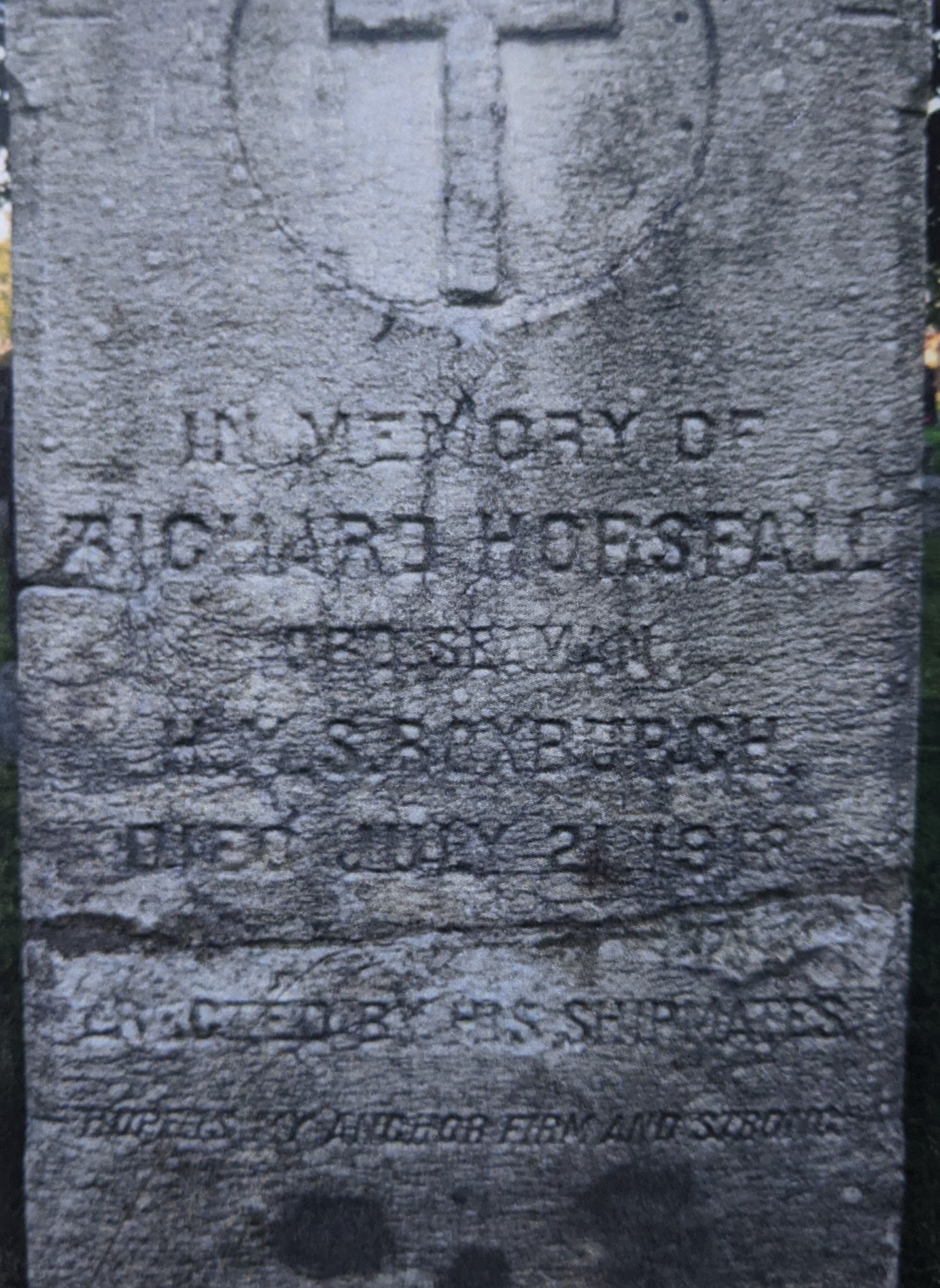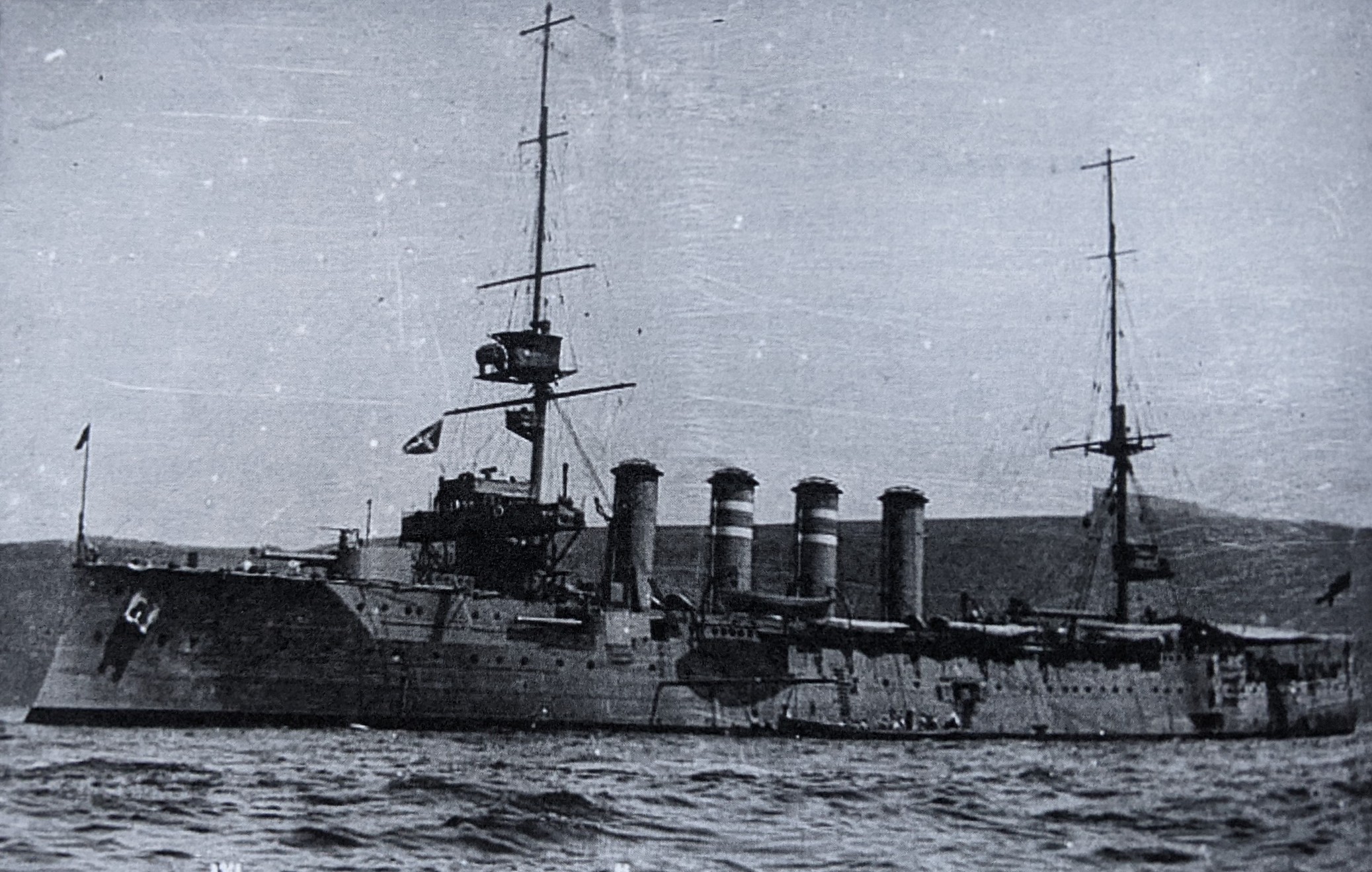
Richard Horsfall
Ordinary Seaman. HMS Roxburgh.
Previously; Private 7/1074. Duke of Wellington's Regiment.
Born in Golcar in 1894, Baptised at St. John's Church on 25th March 1894.
Son of Wright Sydney, a weaver, and Clara Jane Horsfall of 78 West End Road, Golcar.
Occupation; Woollen Twister In.
18th May 1918 married Evelyn Boothroyd of Longwood at St John's Church Golcar. Witnesses were Edward Westerby and Annie Horsfall (Richard's sister.)
Address: 33 Victory Ave, Longwood.
Died of disease 21st July 1918 aged 24.
Buried at St. John's Cemetery, Halifax, Nova Scotia.
Richard joined the 7th Battalion. West Riding Regiment, Territorial Army in 1911 aged 17 and greed to serve in a National Emergency. He served in France from April 1915 to 1st June 1916 when his engagement was terminated. After which he wrote to say his account had not been settled. He then enlisted in the Royal Navy.
In July 1918 two British ships were in East Boston, Massachusits preparing to take on board a US Artillery Regiment ten hundred and fourteen troops, complete with its equipment the Scotia, where they stayed until their Roxburgh was acting as escort. They sailed from Boston harbour on 31st July to Halifax, Nova departure on 4th August when they sailed for Liverpool

HMS Roxburgh.
10,700 tons. Speed 22.25 knots. Armament: four 7.5in guns, six 6in guns, two 2 pounder guns, twenty-two 3 pounder guns and two maxims plus two 18-inch torpedo tubes.
A Devonshire class cruiser, launched in 1904 costing £850,000. Joined the Grand Fleet in August 1914, and on 6th August, along with the HMS Argyll, captured a German merchant ship.
In January 1915 had a refit and overhaul and was back at sea on duty on 27th April commanded by Captain Foot. On the 20th June the Roxburgh was steaming in the North Sea about 100 miles from the Firth of Forth when she was hit by torpedoes from German U-boat U-38 at 1.45pm. German Captain Valentiner fired two torpedoes, one aimed to the fore of the ship and one midships. One hit the Roxburgh and she sustained damage to her bow.
On the bridge, the watch officer saw both tracks in the water. He ordered a turn to avoid the attack, which caused one of the torpedoes to miss, but the other hit just forward of the sick bay, piecing a hole in the side and the resulting explosion blew a larger hole in the opposite side of the ship. The Roxburgh was lifted out of the water and dropped back down again. The crew immediately sprang into action and making the lifeboats ready for if the Captain gave the order. Below decks the Engineer force was busy closing watertight doors and shoring up to keep the flooding localised.
On deck the gunners were keeping the U-boat busy so she could not get into position for a finishing shot. The engine room was not flooded and the Roxburgh was able to make good speed and got away.
Captain Foot's crew had done a good job and by 4pm they were surrounded by four Destroyers ready to give assistance. By 10.30 that evening they were passing the Forth Bridge when the ship's band struck up "Here we are again" and as they passed other ships at anchor they received a rousing cheer.
In April 1916 the Roxburgh was sent to Norwegian waters and in September served on the North America and West Indies Station.
On 12th February 1918 the Roxburgh was escorting a convoy 24 miles off Malin Head, the most northerly point on the Irish mainland when she sighted U-boat U-89 at a distance of no more than 200 yards and quickly took chase. In the ensuing action she rammed the U-boat and cut it in two, causing it to sink with the loss of all 43 crew.
In July 1918 two British ships were in East Boston, Massachusits preparing to take on board a US Artillery Regiment ten hundred and fourteen troops, complete with its equipment the Roxburgh was acting as escort. They sailed from Boston harbour on 31st July to Halifax, Nova Scotia, where they stayed until their departure on 4th August when they sailed for Liverpool.
